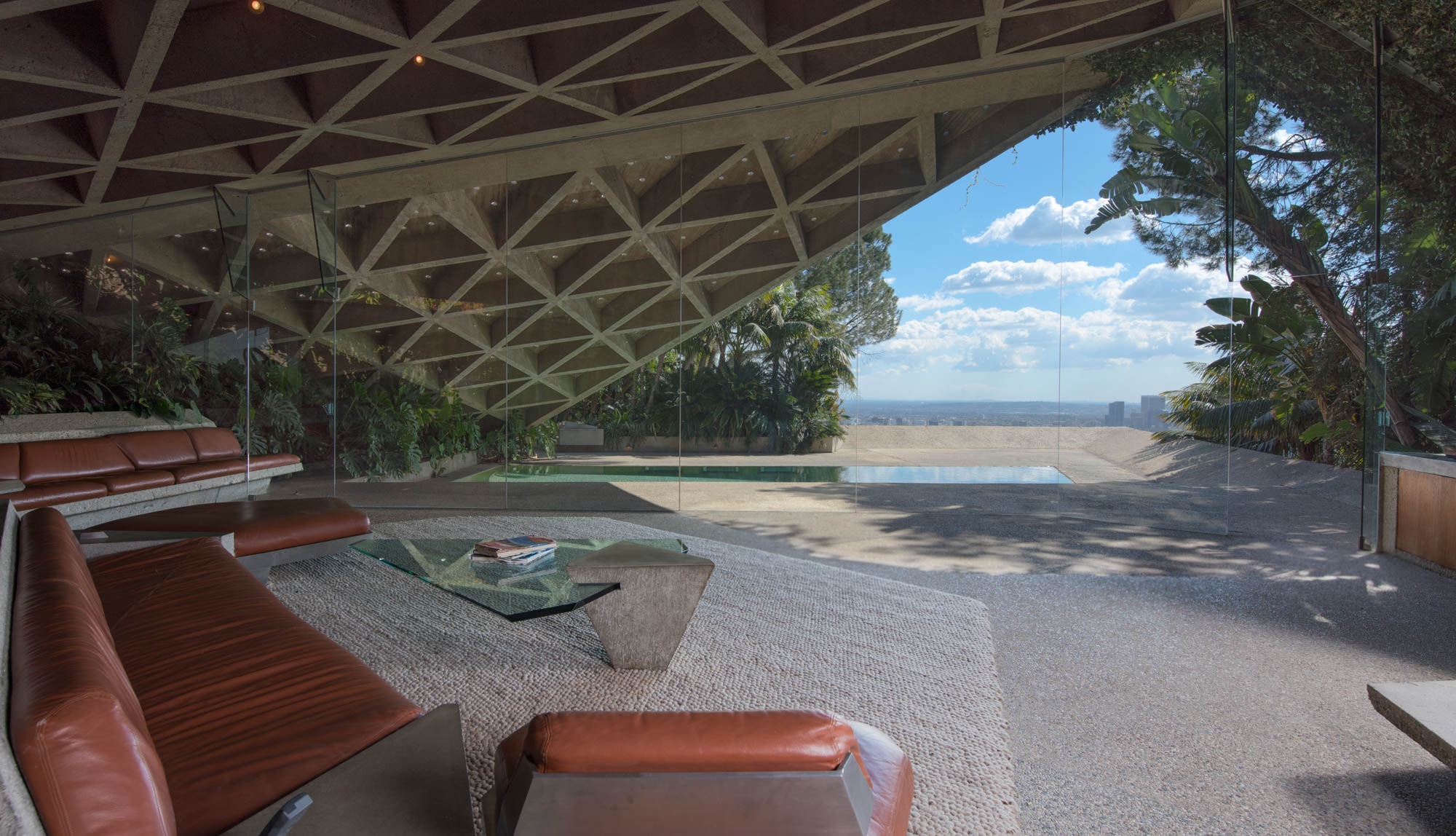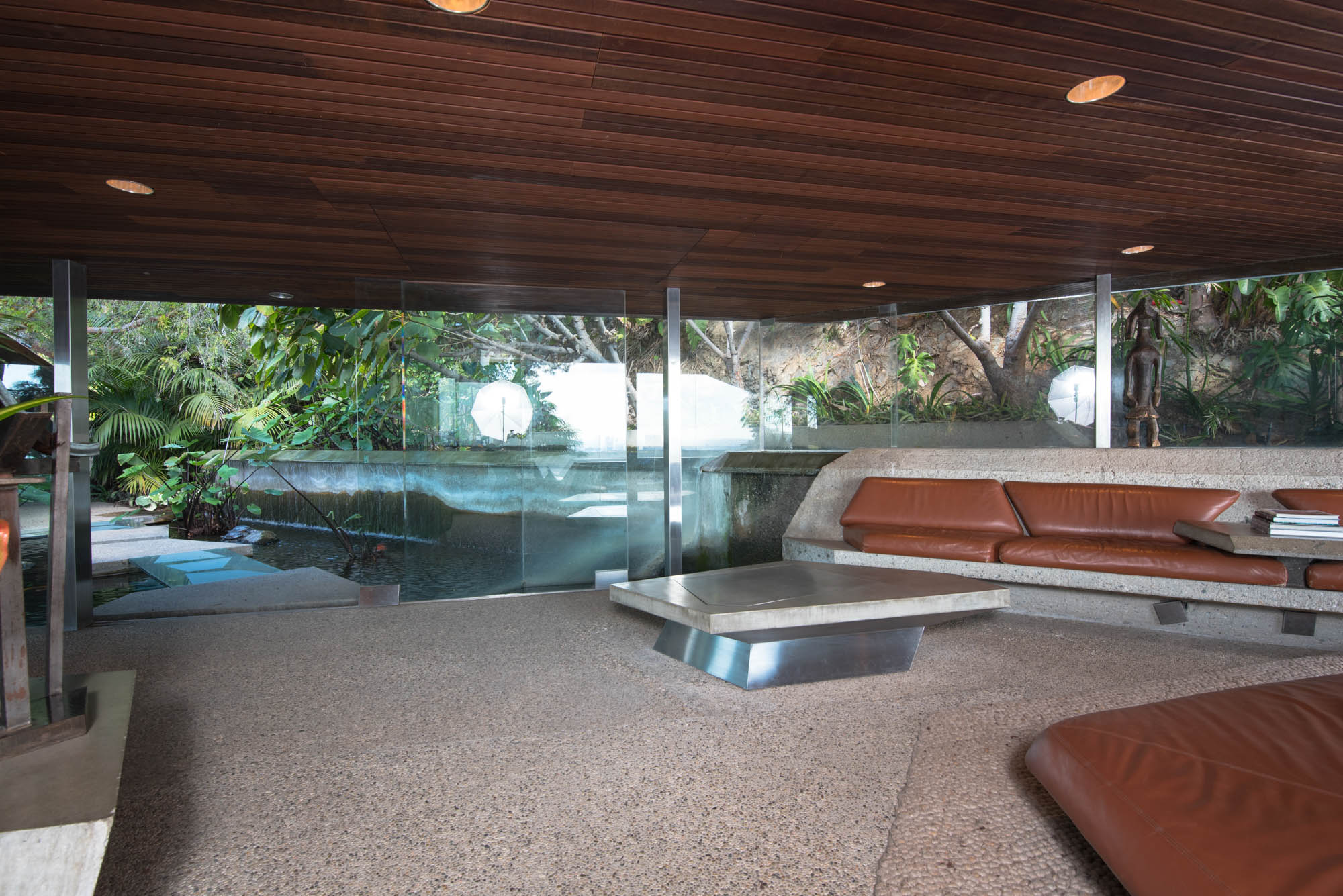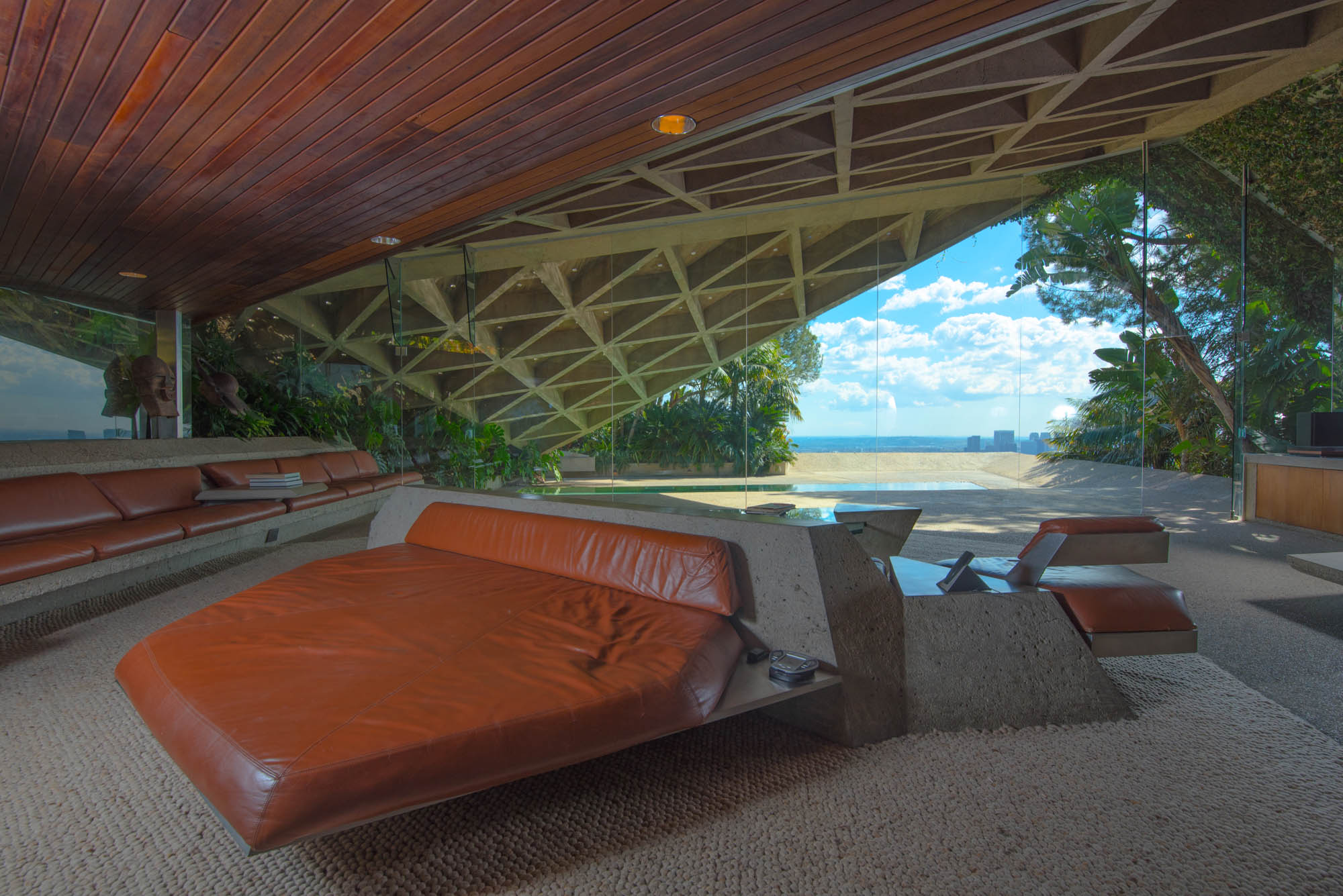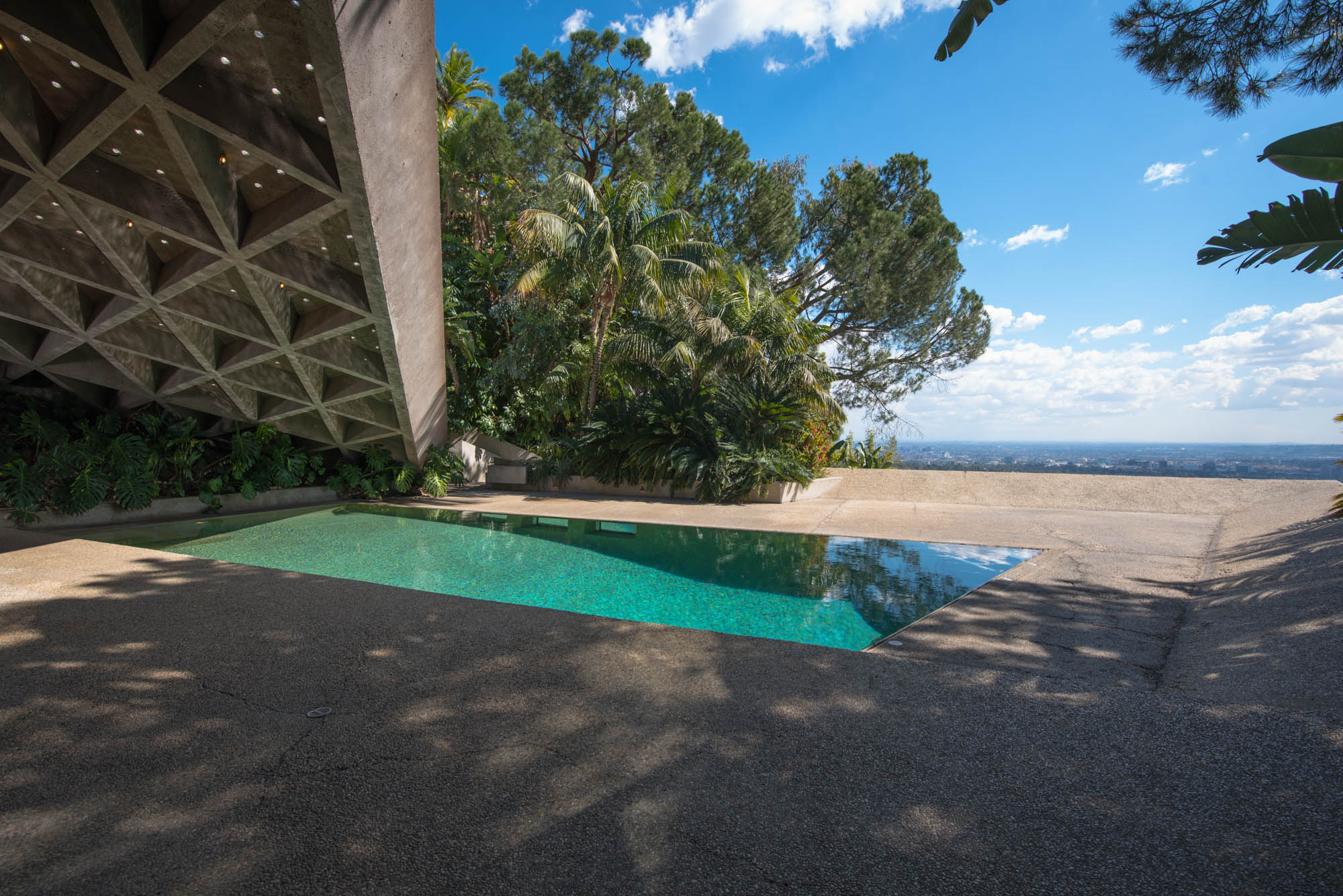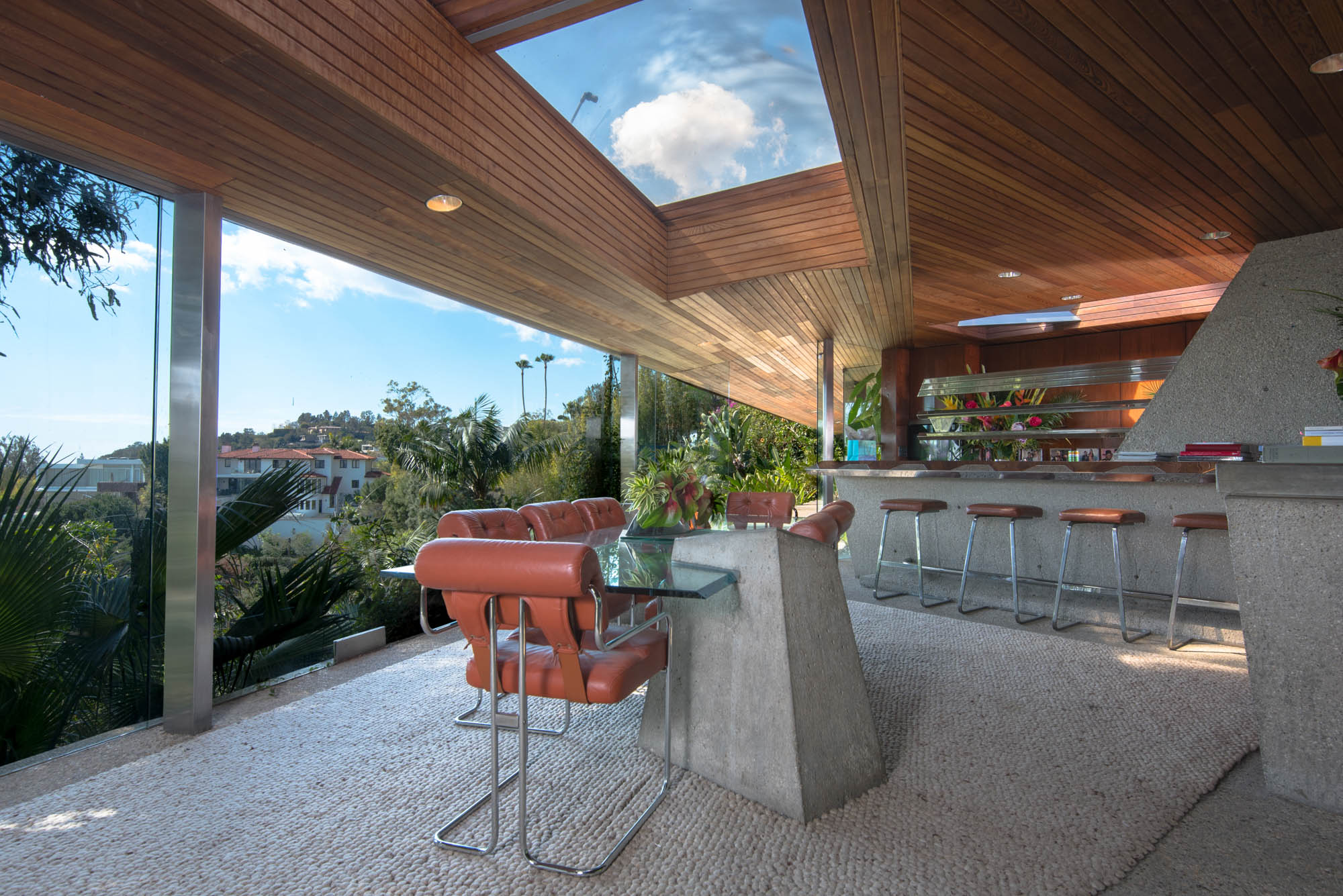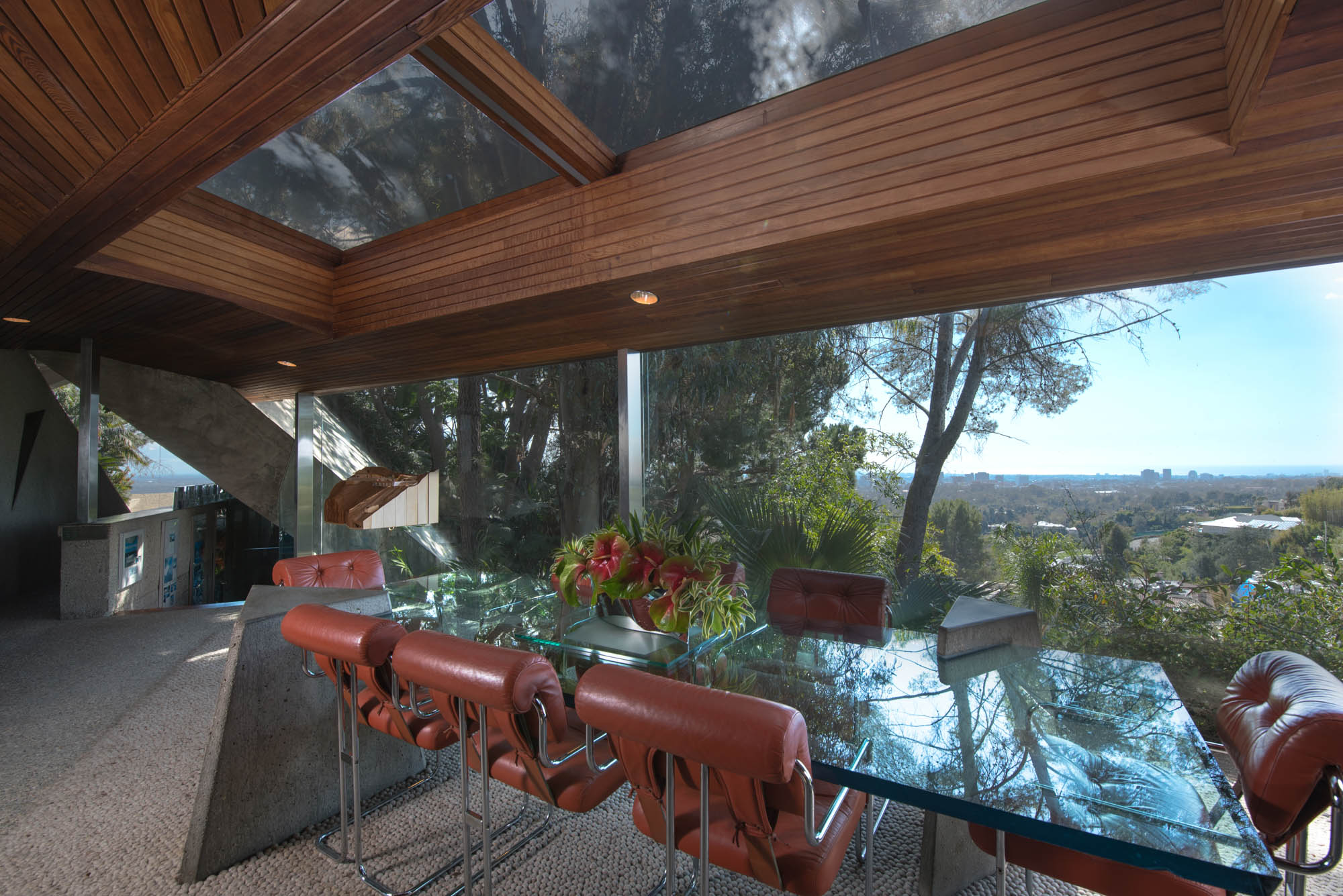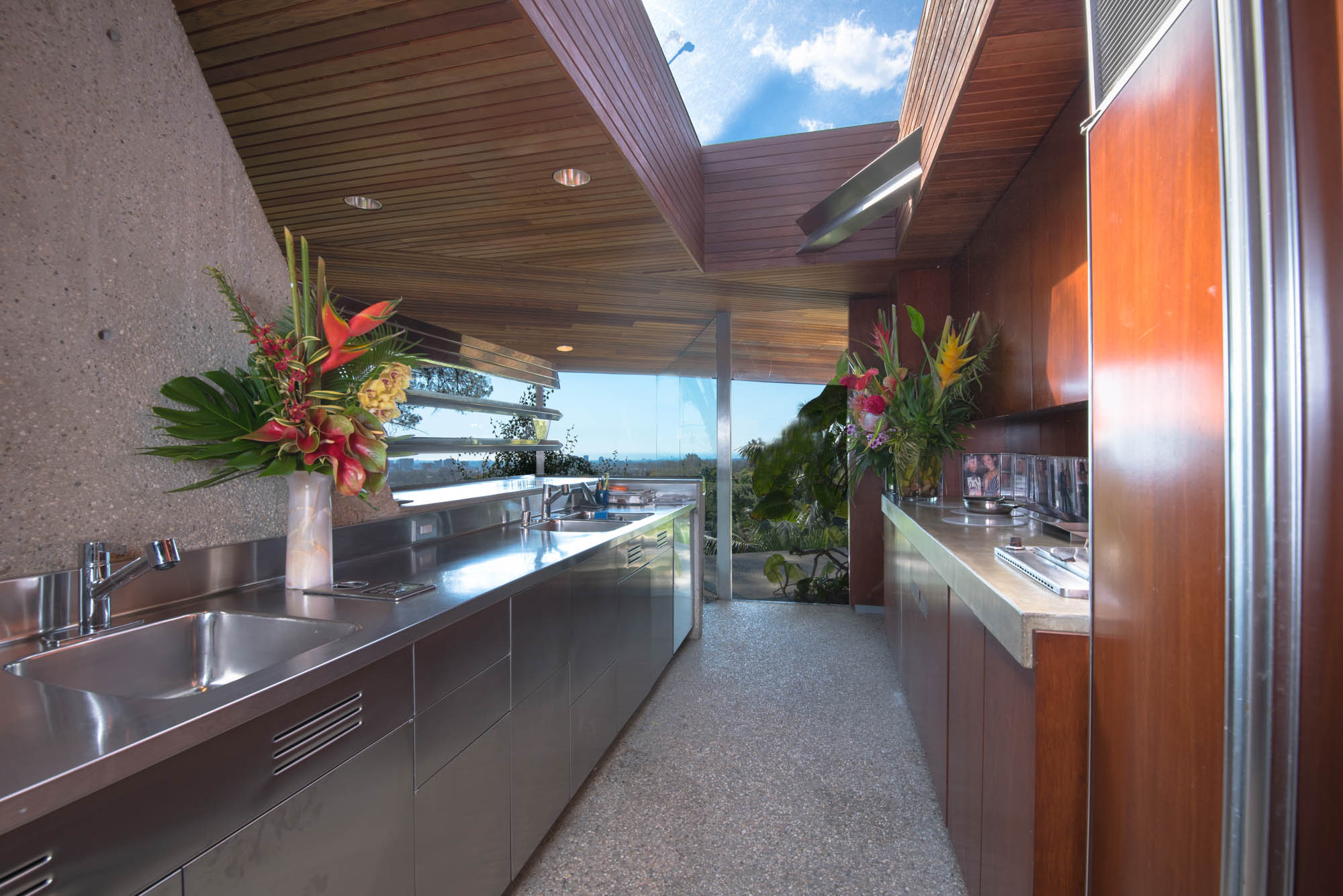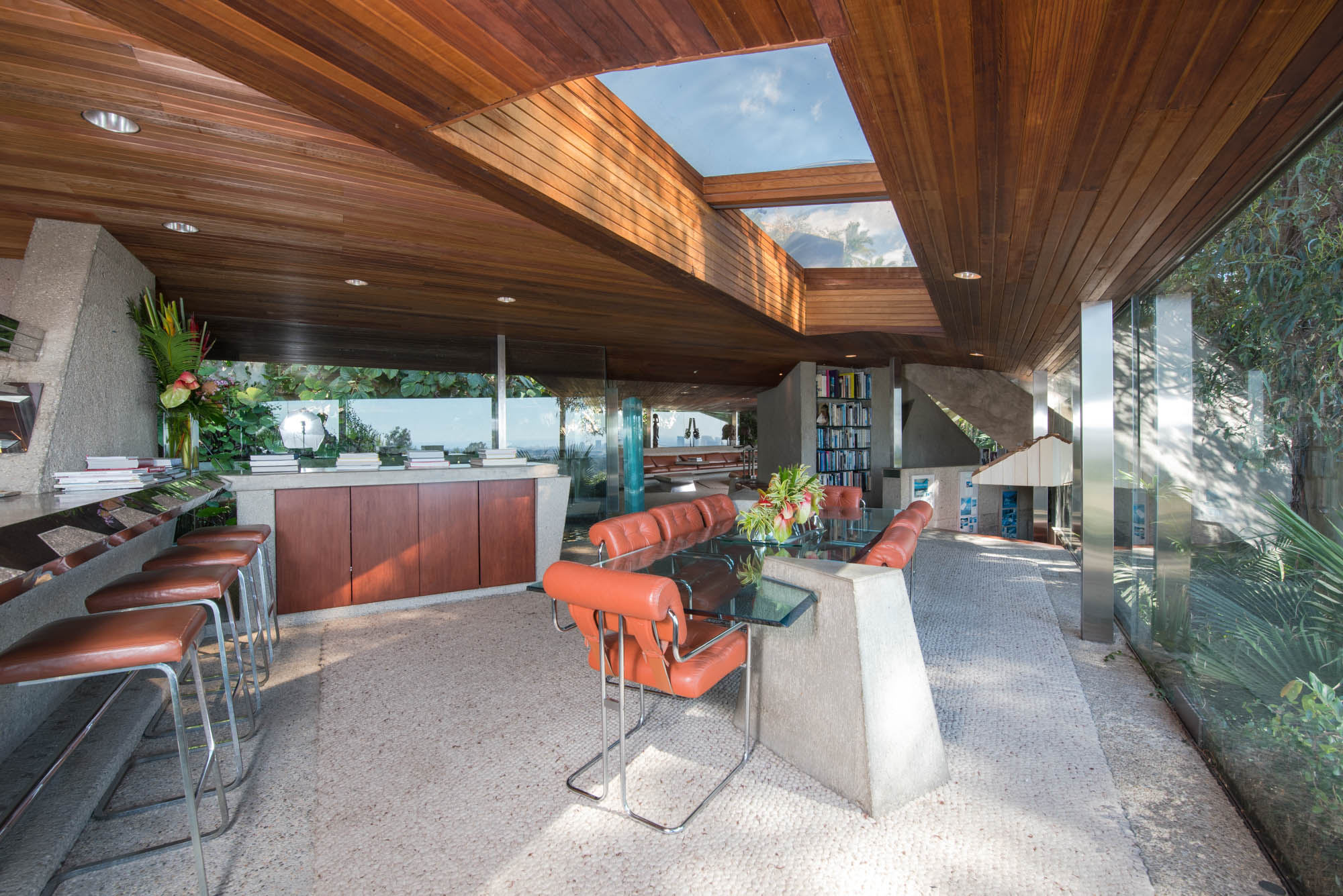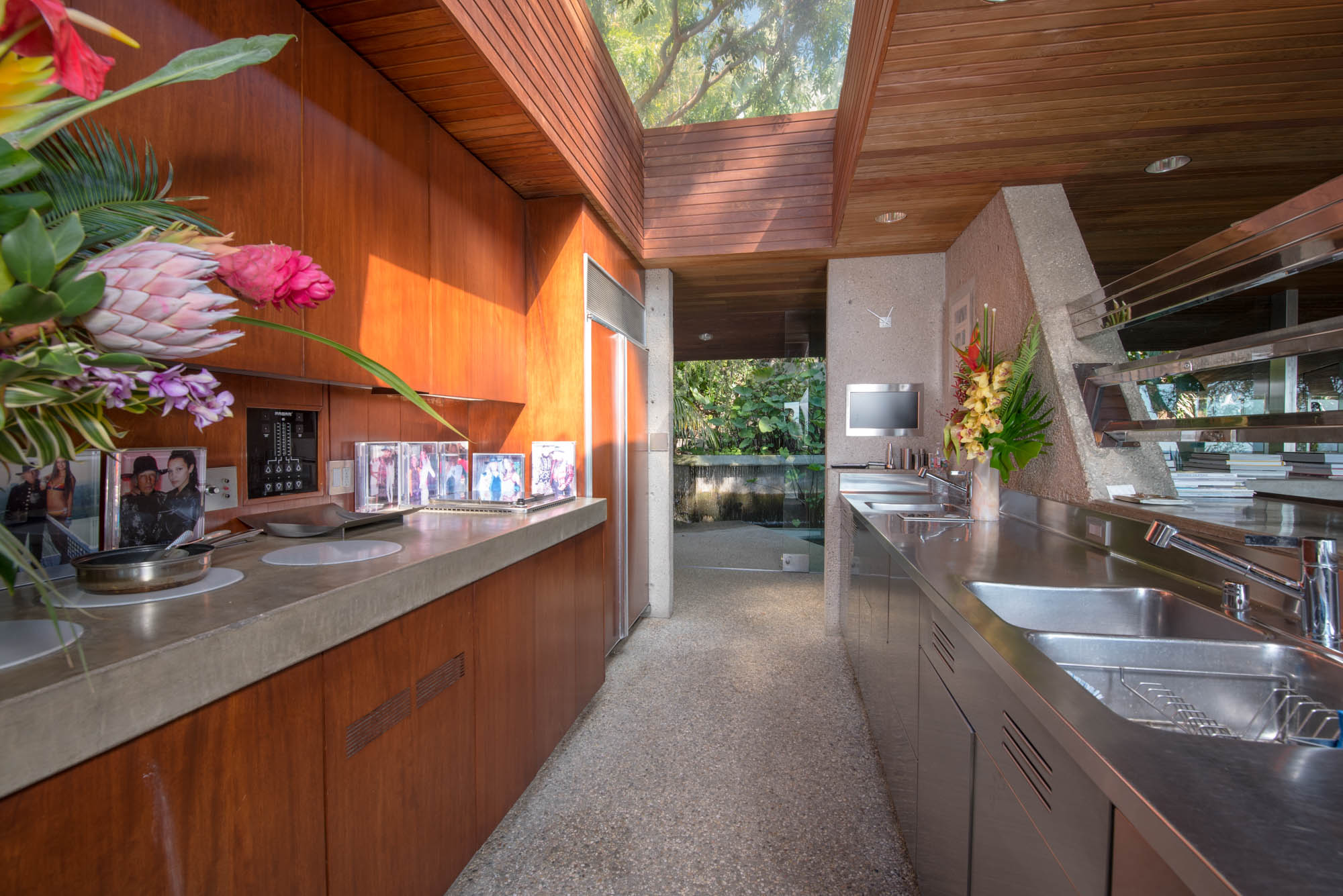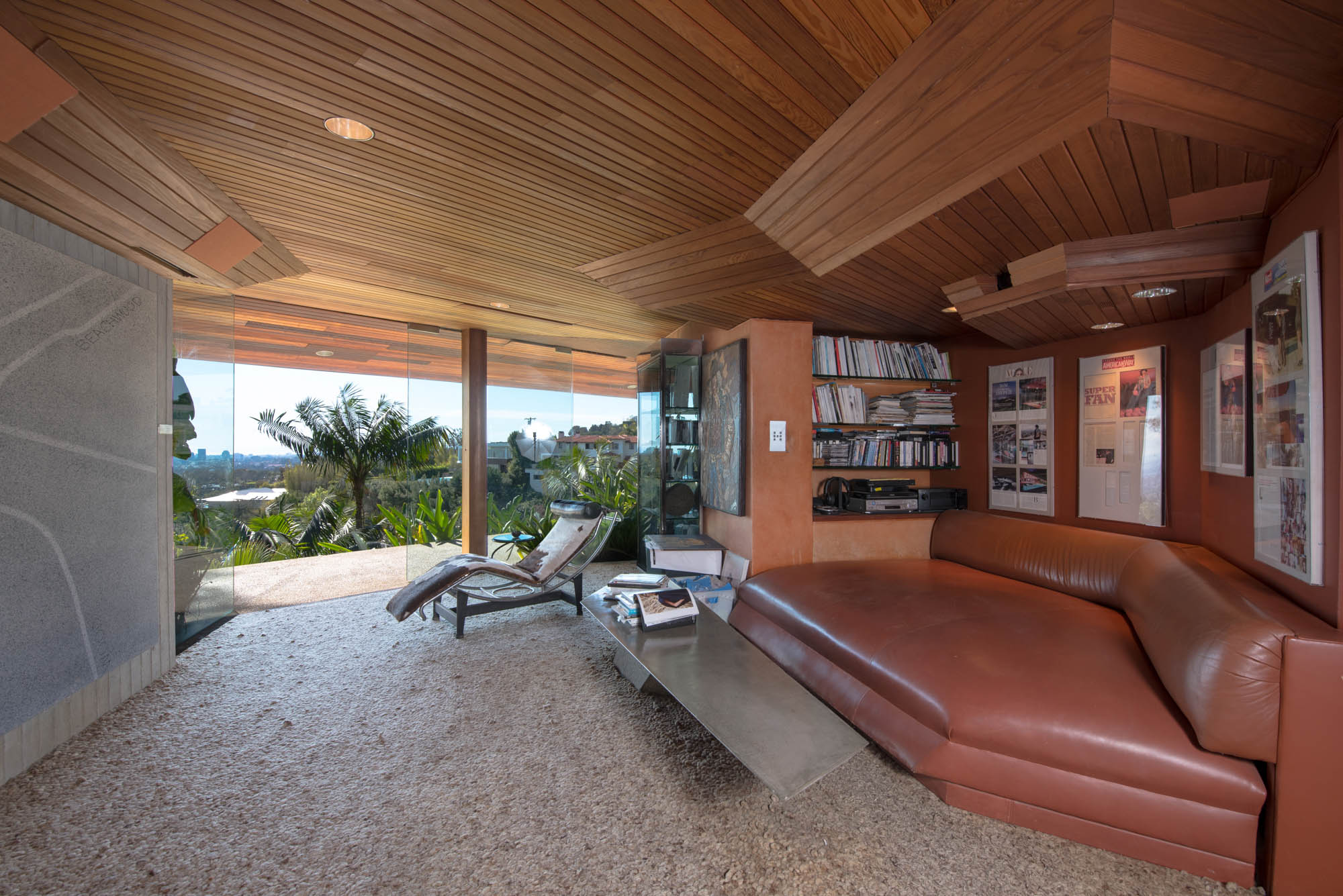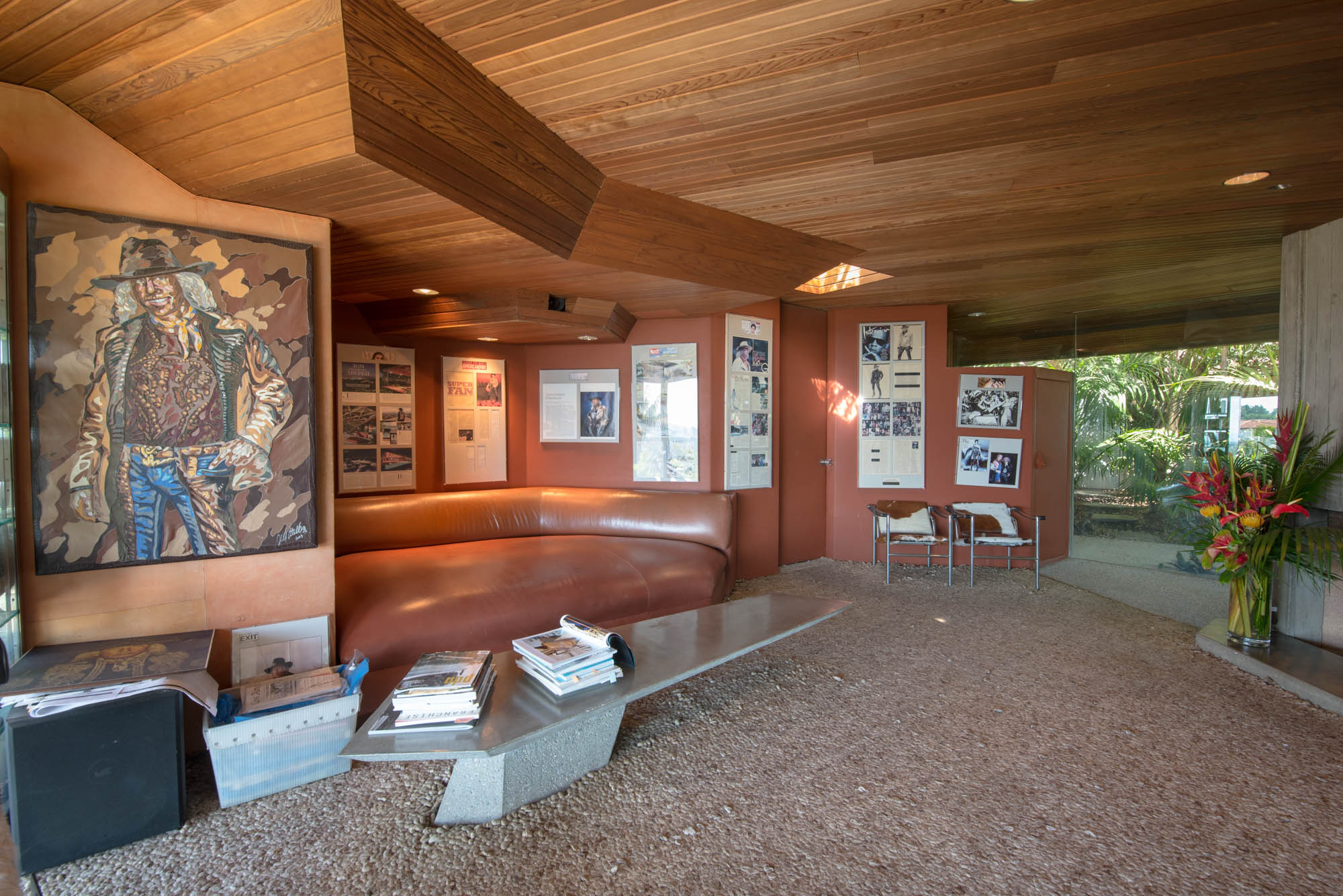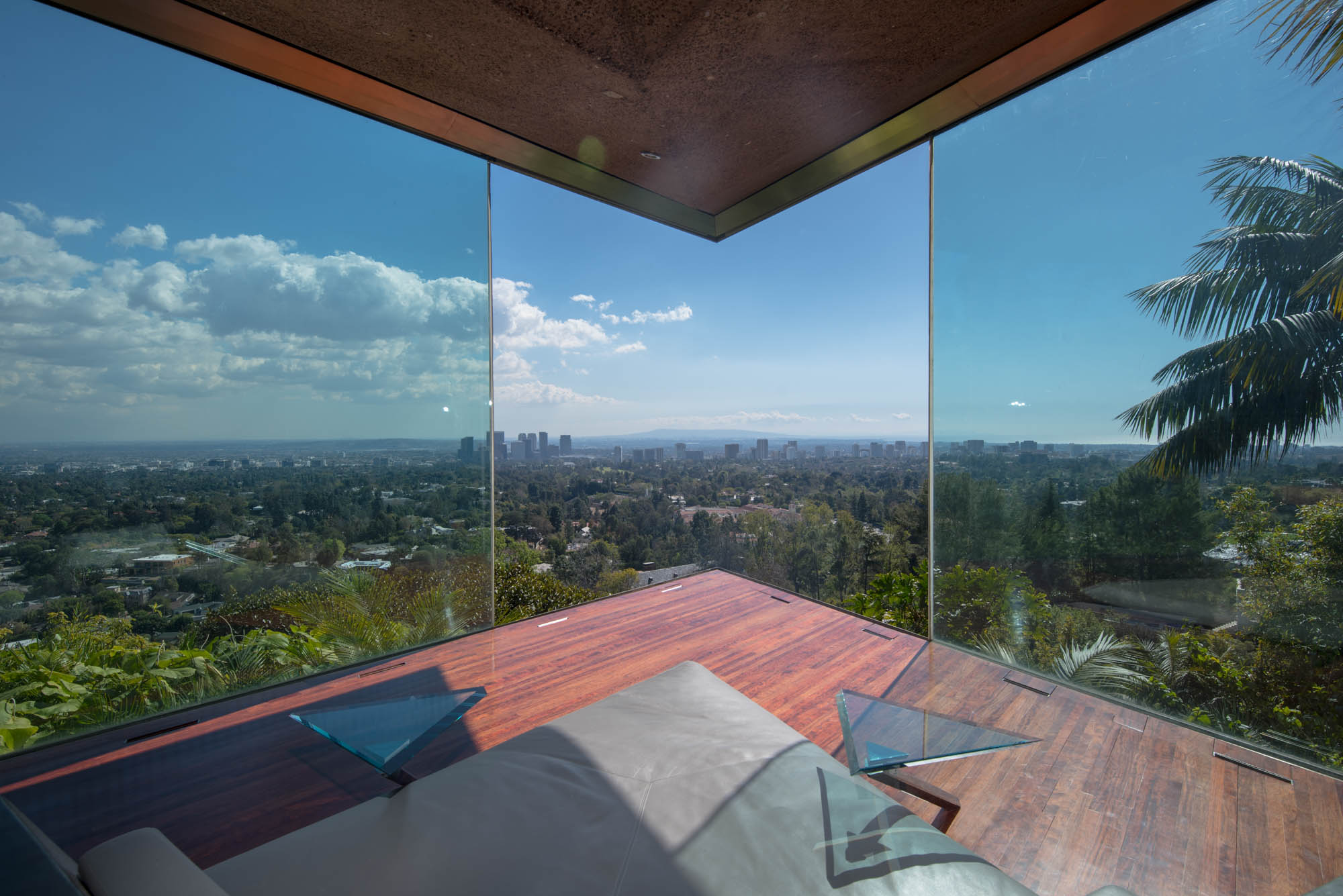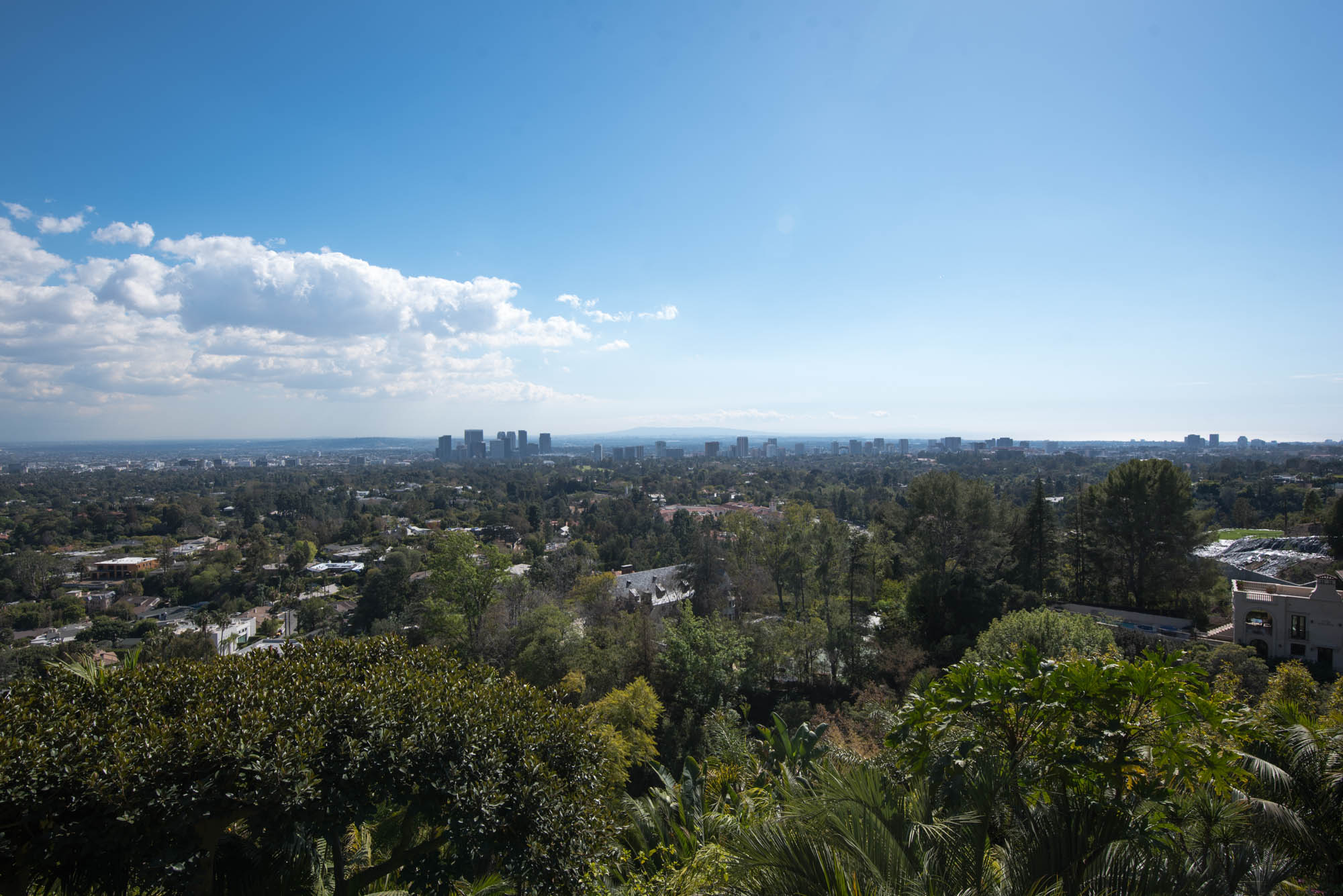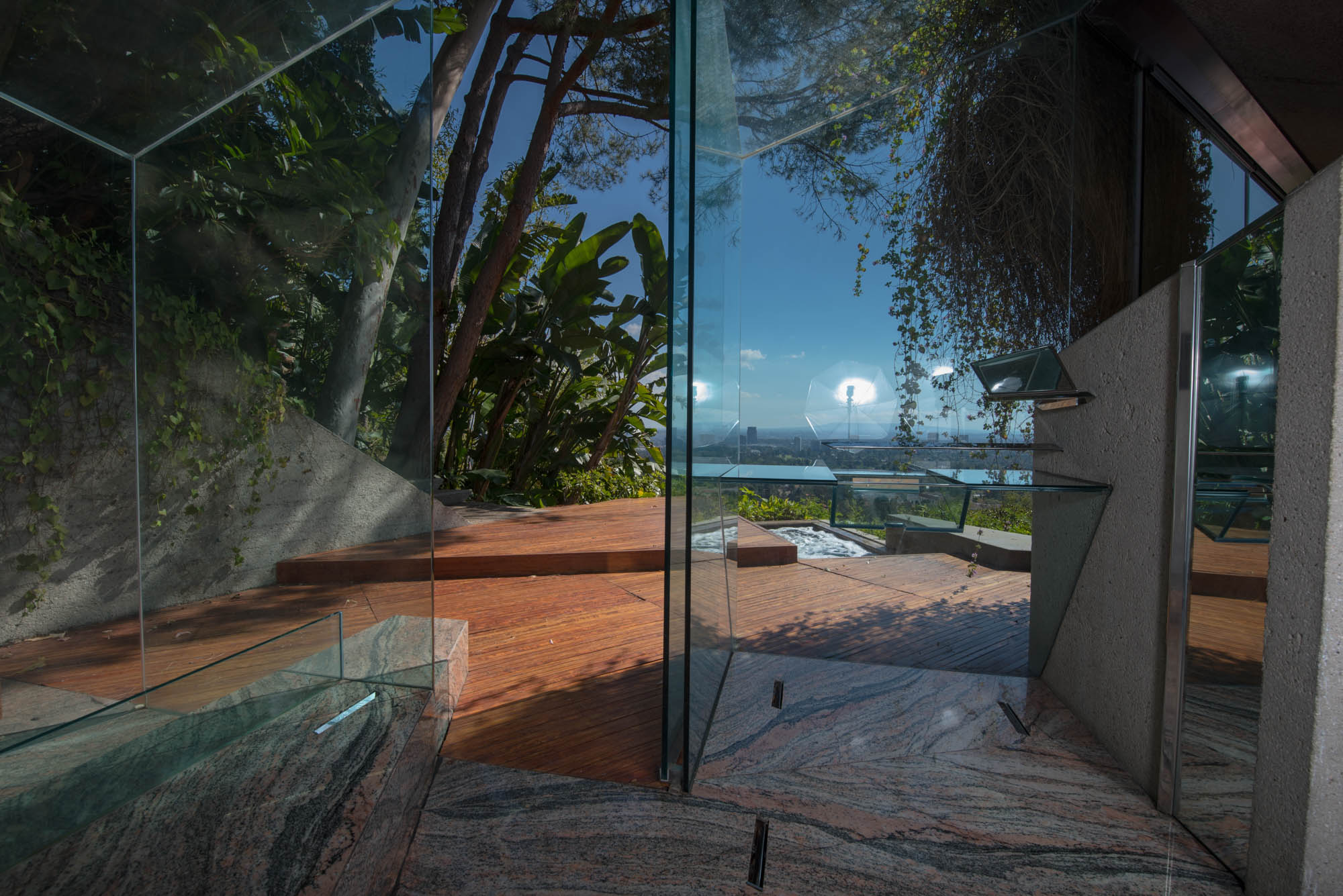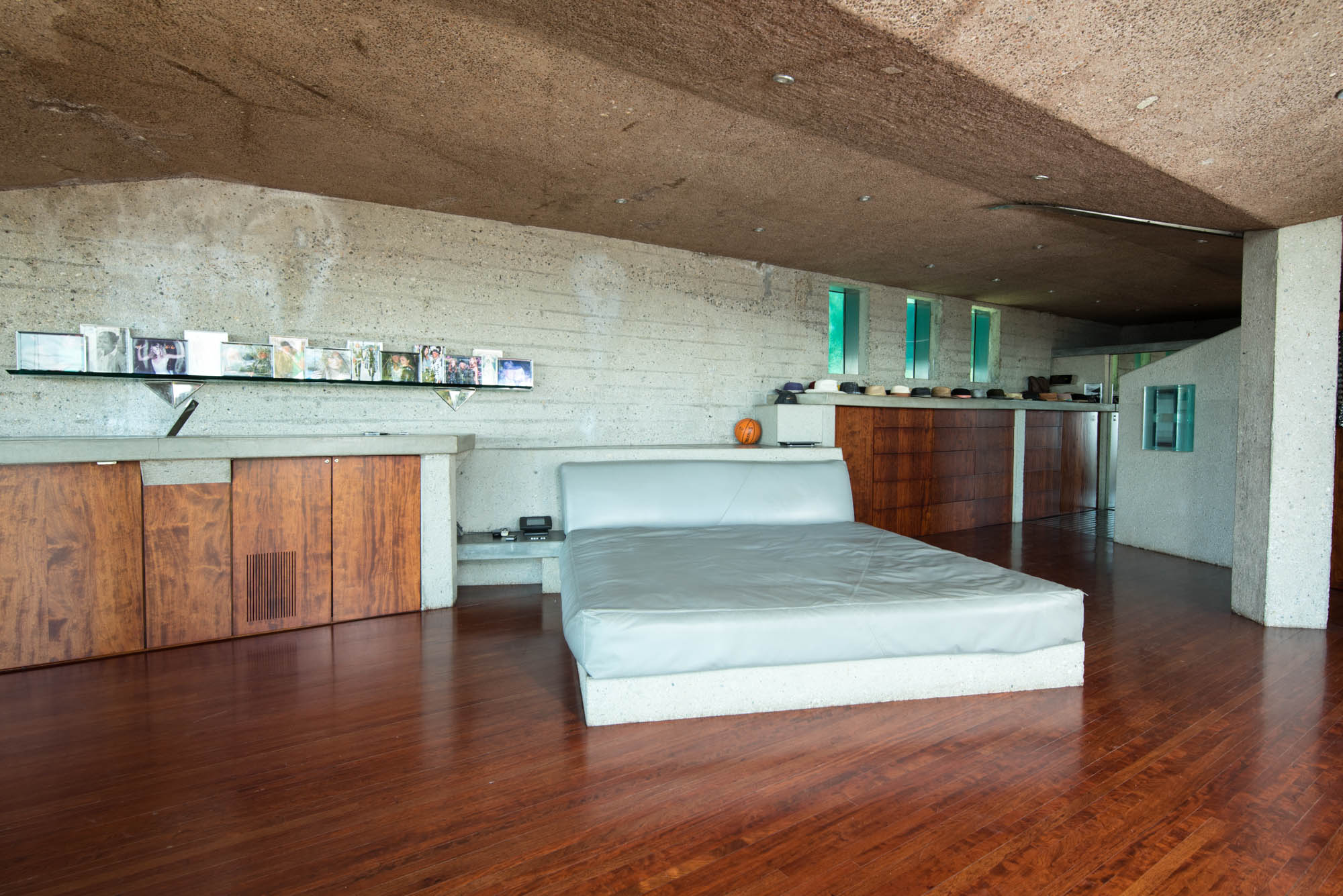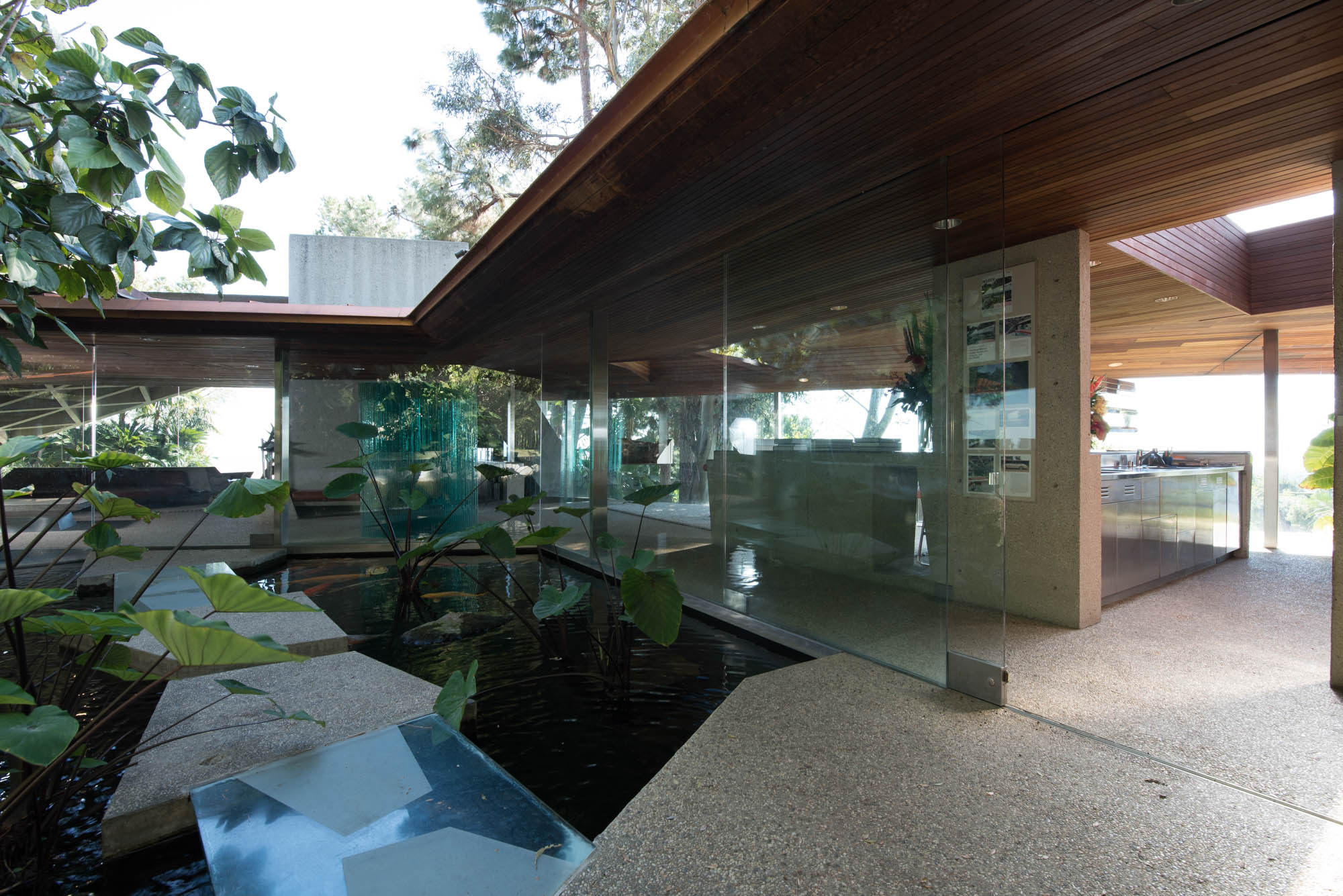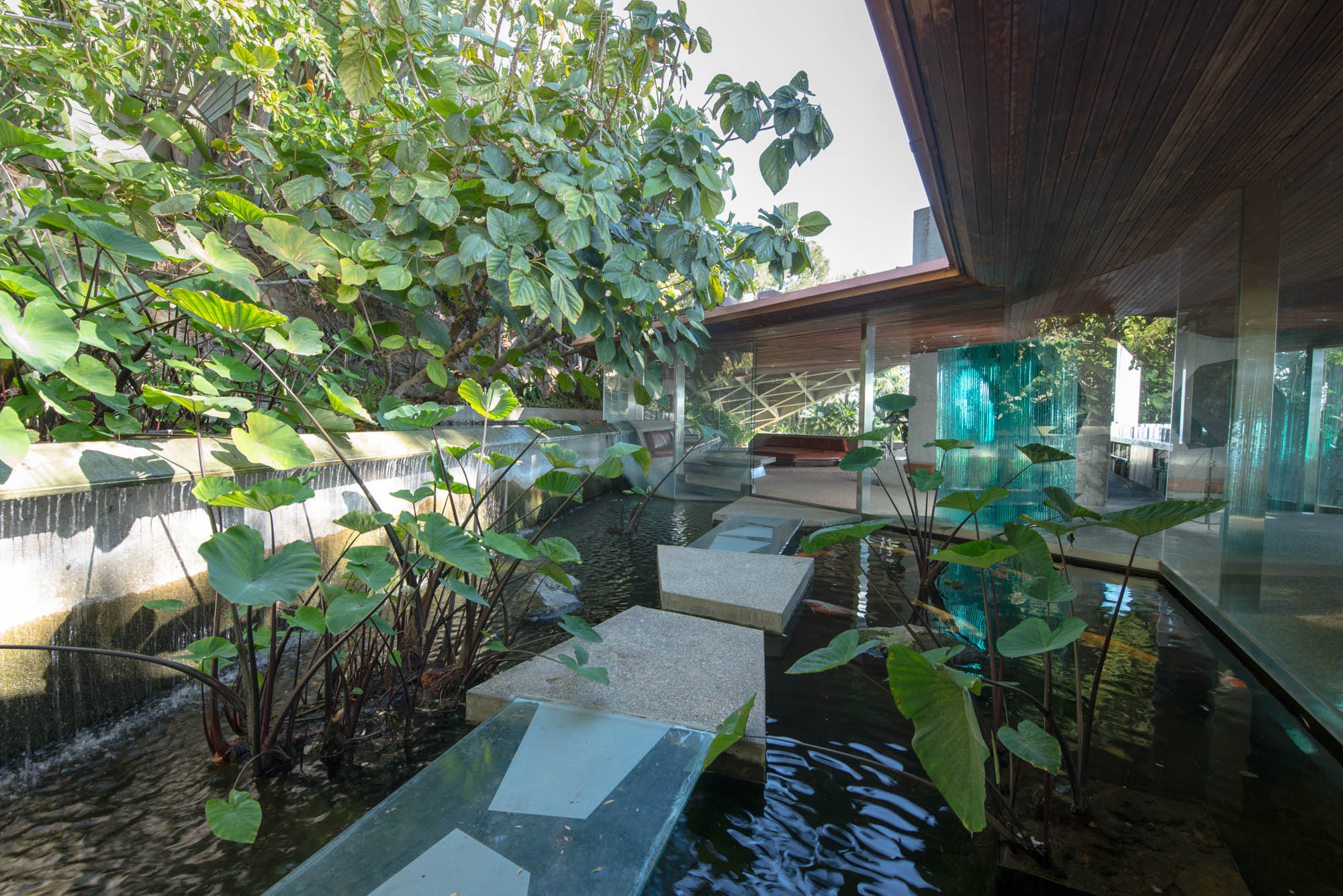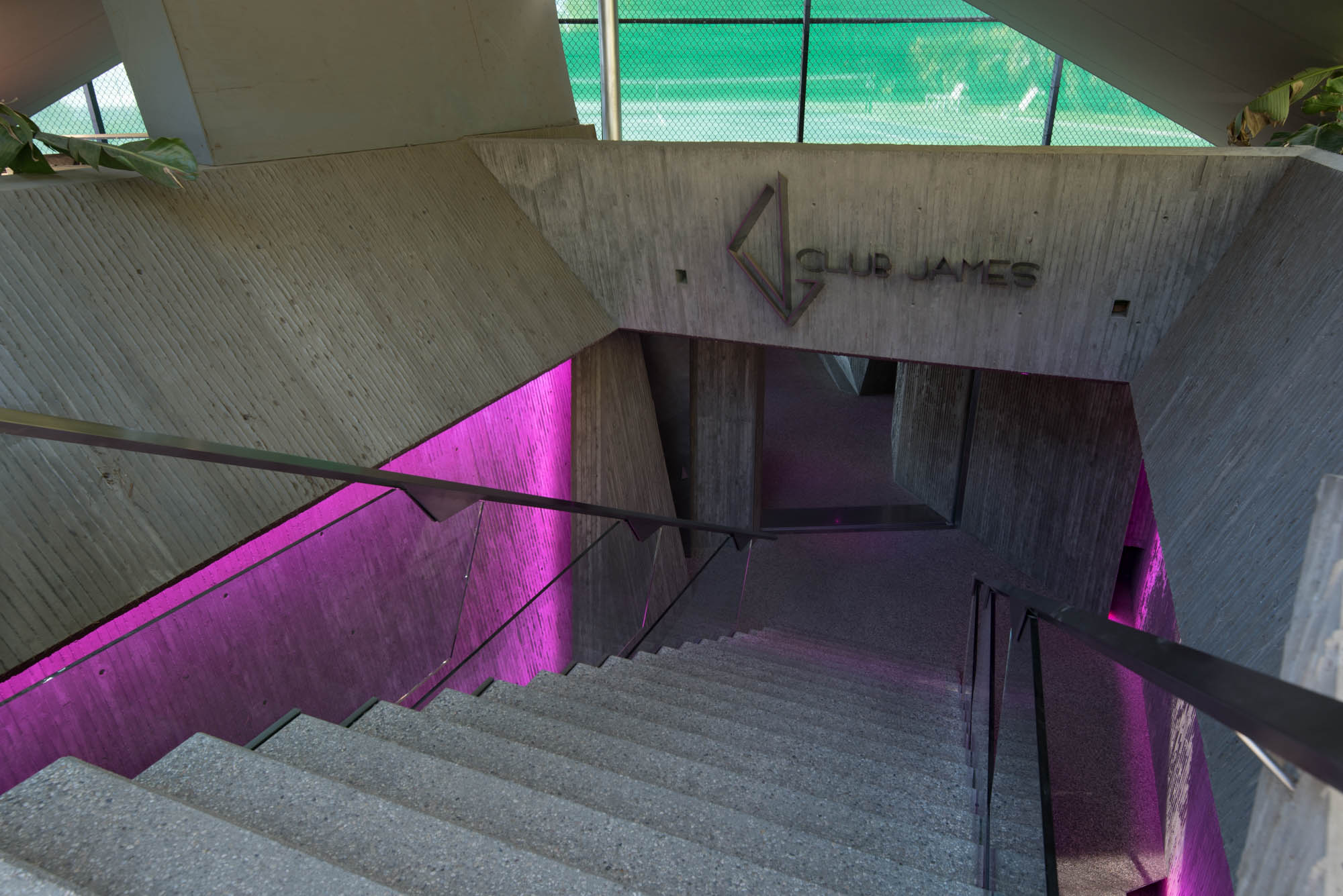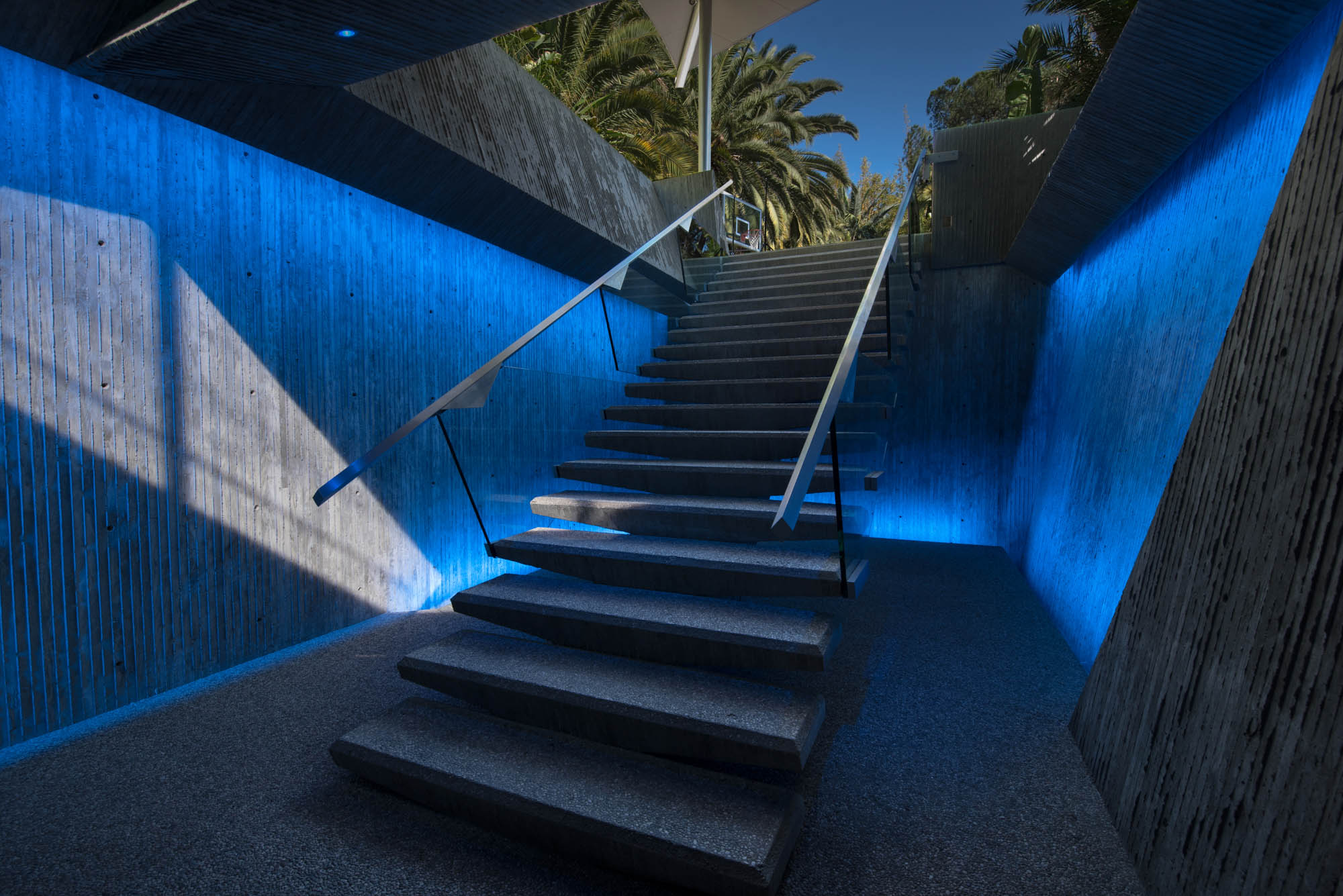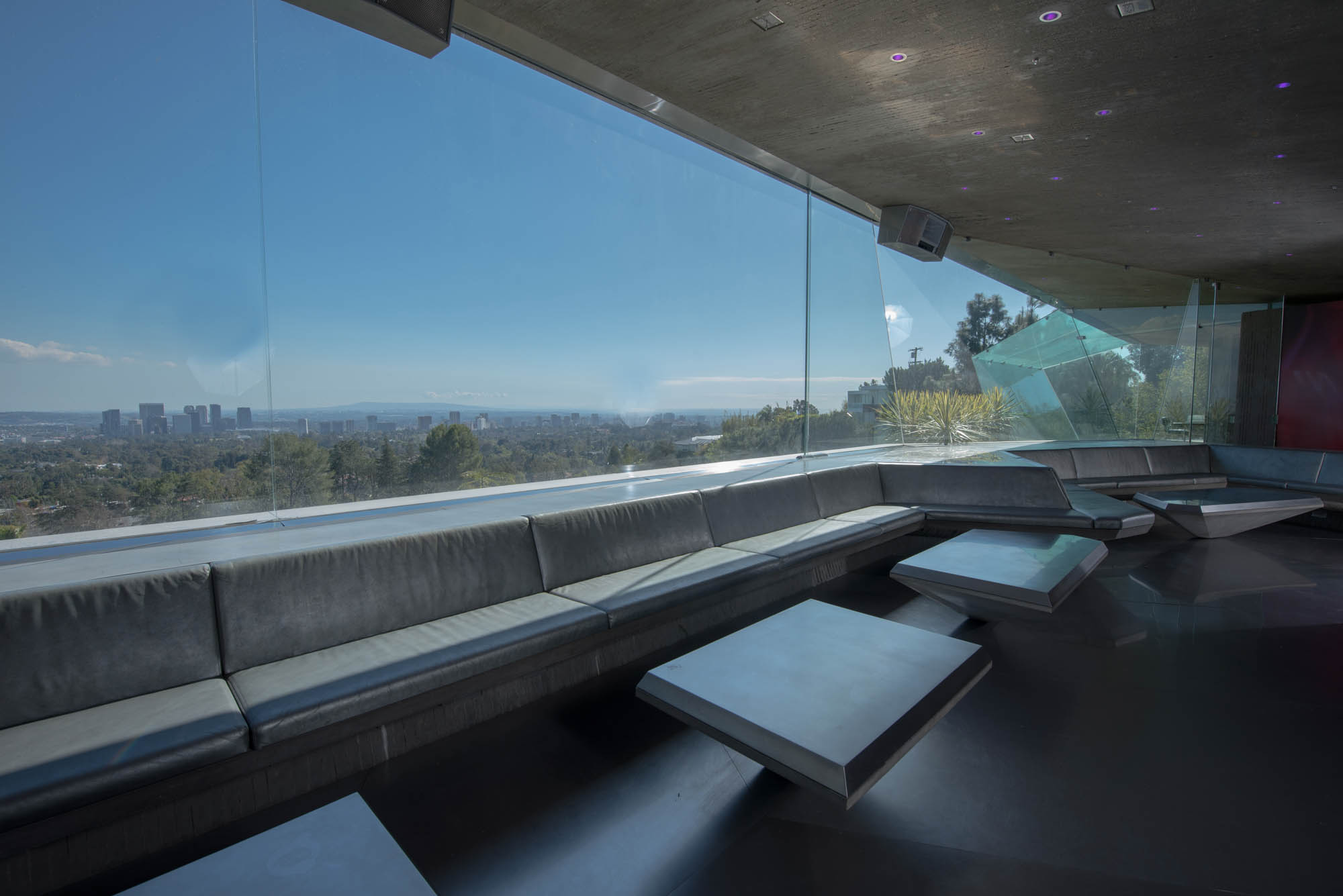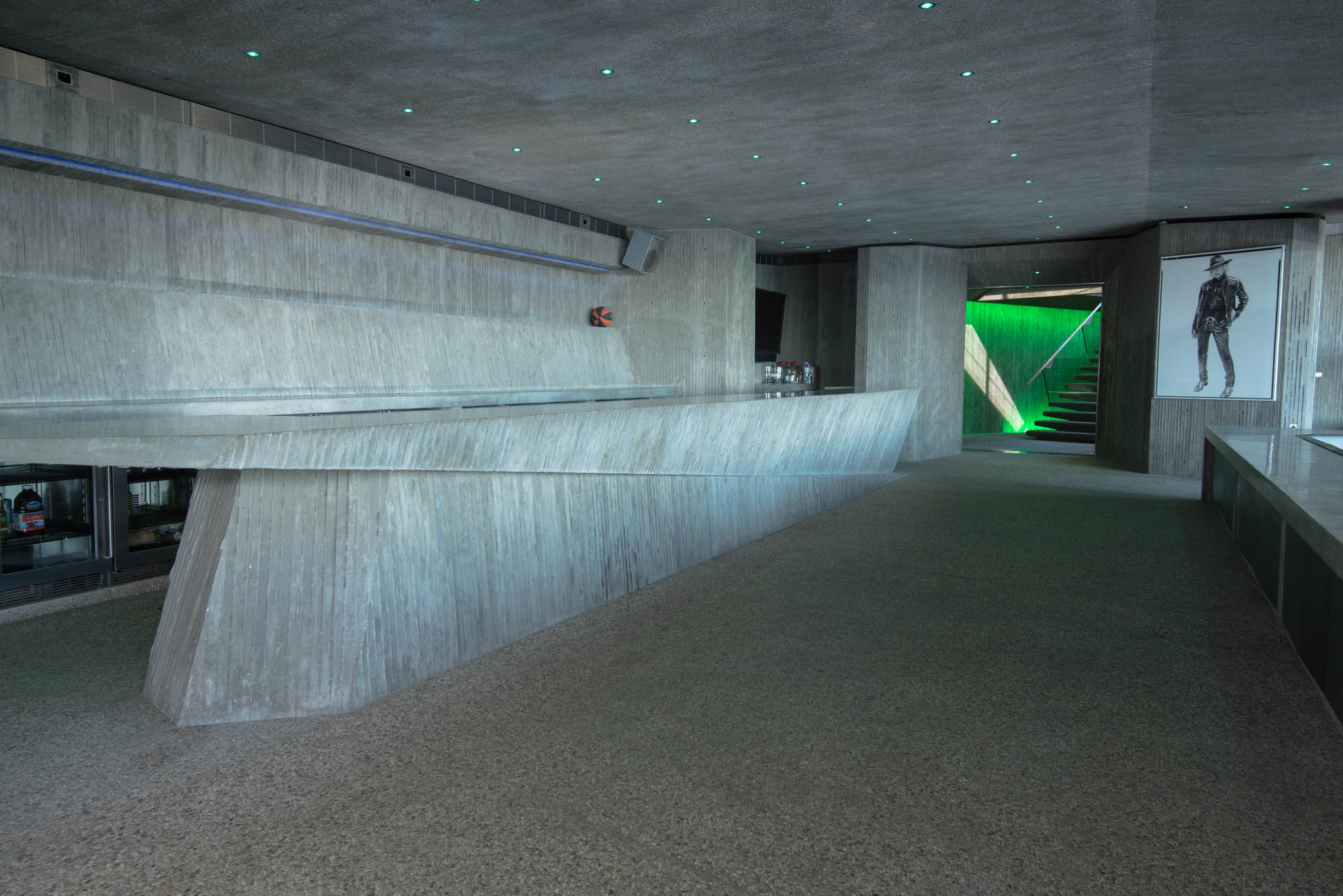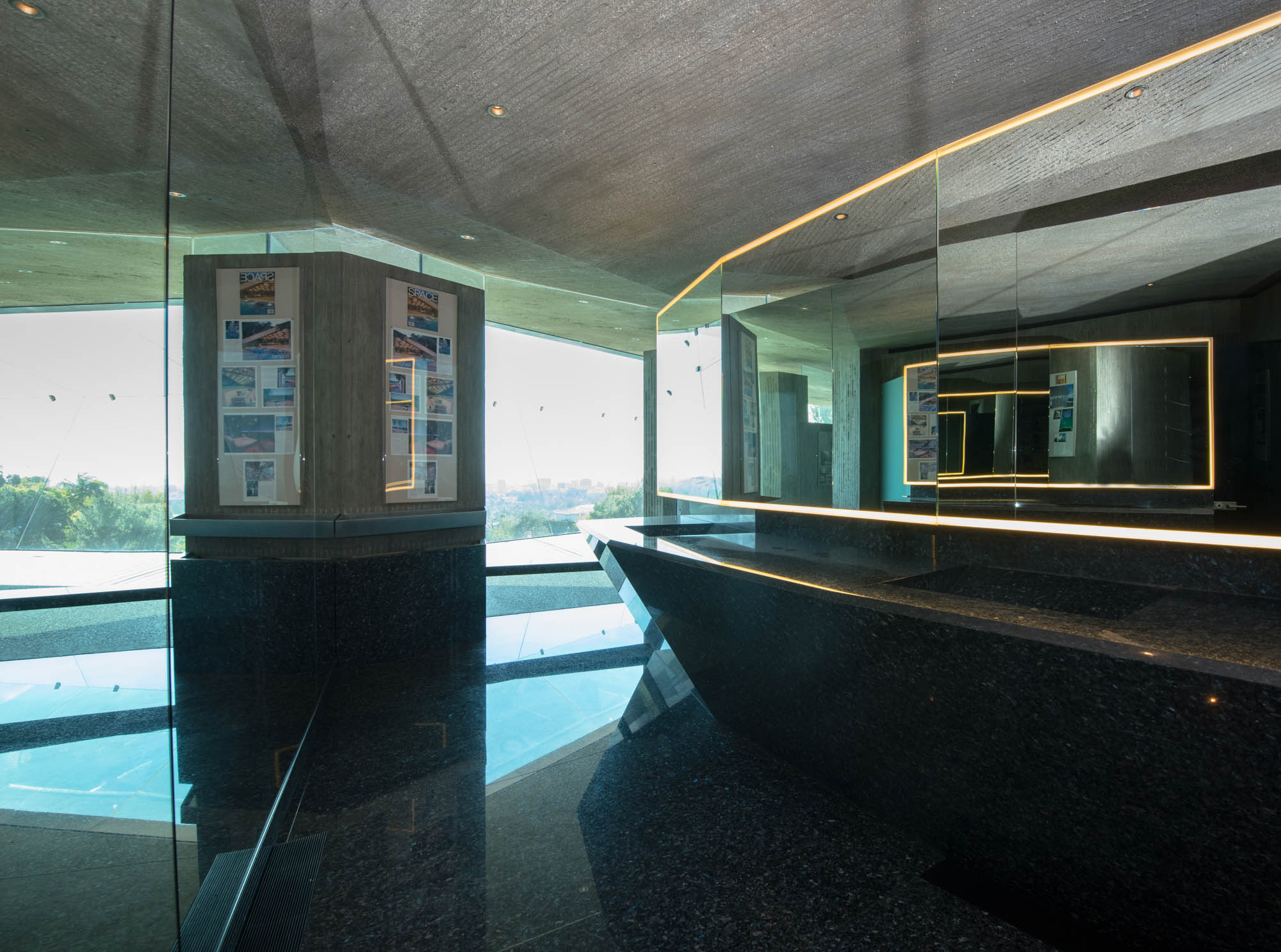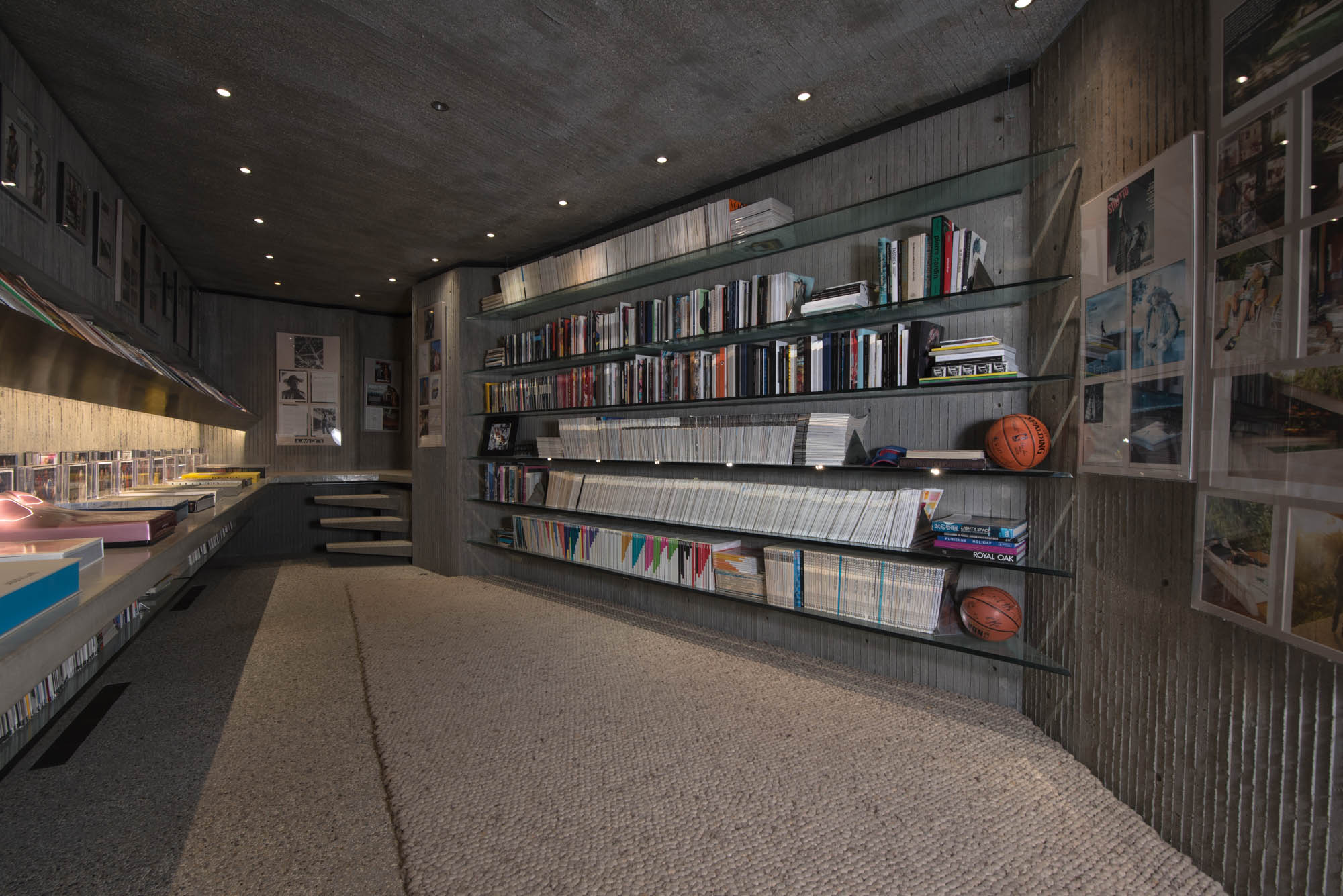Film Office
1FAB Location ID
FAB_004
Category
Architectural, Bars, City Views, Garage, Mansions, Mid-Century Modern, Modern, Pools, Private, Residential, Tennis Courts, ViewsAbout The Location
The home was originally built for Helen and Paul Sheats and their three children. Helen, an artist, and Paul, a university professor, had previously commissioned Lautner for the 1948-1949 Sheats Apartments project located in Westwood adjacent to UCLA.
There were two subsequent owners before a businessman, James Goldstein, purchased the residence in 1972, in a state of some disrepair. No walls existed in the living room, and a device meant to heat the house often didn’t work well. Goldstein commissioned John Lautner to work on the transformation of the house; a series of remodelings that would encompass the entire house over a period of more than two decades. Goldstein worked with Lautner until the architect’s death in 1994 on what they called “perfecting” the house.
The Sheats Goldstein Residence is one of the best known examples of John Lautner’s work; he designed not only the house, but the interiors, windows, lighting, rugs, furniture, and operable features. The house is extensively detailed, and the range of the architect’s work is visible through the different stages of the re-mastering. All of the furnishings enhance the house and are completely related so that the aesthetic of the forms is a function of the whole.
The original construction of the house is poured-in-place concrete, steel, and wood. The home was built with 5 bedrooms, 4.5 baths, and a living room that was originally completely open to the terrace, protected by only a curtain of forced air. The living room features open space that carries the interior into the outdoors blurring the line between the interior and exterior. The expansive coffered ceiling living room is pierced by drinking glass skylights in the coffers (750 skylights in all). The home uses cross ventilation for cooling; there is no air conditioning. The floors are radiant heated with copper pipes that also warm the pool. Exterior covered pathways lead to the guest bedrooms and the master bedroom, and outside features include a tennis court and night club.
Lautner opened these spaces because of the temperate climate that Southern California offers most of the year. Pool windows in the master bedroom were also an original feature that allowed Helen Sheats to watch her children as she worked in her studio below the pool. The skyspace, also called Above Horizon, is an art installation located on a steep slope below the residence. The skyspace was designed by light artist James Turrell. The project is built in the same construction materials as the home. Originally, James Goldstein conceived this art installation as a collaboration between John Lautner and James Turrell, but Lautner died before being able to work extensively on the project. Now finished, the room features two portals, made by a local aerospace engineer, which fold away using carbon fiber composite materials. The room also contains a built-in concrete lounge to enjoy the thousands of hidden LEDs that flood the room every evening for the sky and light show. It was made of 85 tons of concrete and took four years, from 2000-2004 to complete. James Turrell attended the dedication celebration. (Credit: Wikipedia)
Logistics
Main House:
Production needs to provide enough layout board to cover carport and for use under every vehicle(10 boards minimum). A minimum of 15 furniture pads to cover delicate surfaces, plenty of mats to cover all pathways and carpets, a white floor guard for the wood steps to the master bedroom and 12-15 corner protectors are also required.
Tennis Court:
Layout board is required under all equipment. If placing furniture, felt pads are required. Tennis balls under stands are acceptable on smaller projects. No black soled shoes allowed.
Events:
Entire court needs to be lined with thick plastic, then further protected with thick astro turf or commercial carpet.
Vehicle Limits at one time are either a 5 ton truck only (maximum 27 ft) or two small cube trucks (maximum 17 ft) plus 6 additional passenger cars. If no trucks, ten passenger cars are allowed. As a courtesy to the neighbors, vehicle drop offs must be staggered and any holding on Angelo View Drive must be avoided. The site rep will happily assist you further on your production day.
Booking
Permits for this location can be applied for at Film L.A.


